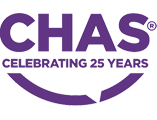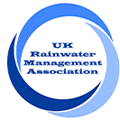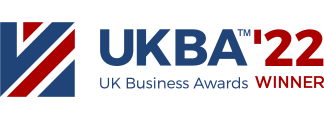The future of Smart Suds. Active Attenuation
12/01/2024

12/01/2024
Sustainable urban drainage systems are here to stay. In fact, from next year, they will be mandatory on all new developments over 100m2. The proposed schedule three amendments to the Flood Act are soon set to be introduced in England. So-called ‘smart Suds’ is touted to be the future of sustainable drainage, but what does this mean, and what is a smart Suds system? This blog is your guide to smart systems that can be combined with rainwater harvesting and water reuse.
Sustainable urban drainage systems are a way of holding back stormwater from the external drainage network. Suds can be achieved in many forms. For example, a natural approach to Suds sees rain gardens and natural infiltration of on-site stormwater. More artificial approaches to Suds involve large attenuation capacity in the form of crates being installed on the development. These attenuation crates can either slowly infiltrate into the ground or release stormwater into the drainage network via a controlled process.
Smart suds systems utilise met office weather technology to ensure there is enough on-site attenuation capacity available for an incoming storm. Stormsaver’s answer to smart suds is our Active Attenuation System which predicts weather patterns 72 hours ahead and is combined with rainwater harvesting to ensure water is being managed effectively on the site.
Combining rainwater harvesting and attenuation may at first seem contradictory. Especially, because attenuation is designed to be empty for most of its lifespan; whereas, rainwater harvesting needs to be full so there is always a supply of rainwater available for reuse as a non-potable water supply within the building. Whilst this may have been the case in the past, Active Attenuation has allowed these two important sustainable technologies to be combined through weather prediction software.
Suds are important as these systems prevent our seriously stressed combined sewer network from becoming overwhelmed in the event of a heavy down poor of rain. Every time combined sewers become overwhelmed; a combined sewer release is required to prevent the whole network from backing up. Combined sewer releases are essentially the process of releasing excess untreated sewage into rivers and seas.
Combined rainwater harvesting and attenuation systems; Active Attenuation is the most sustainable way to manage water. Not only does this approach contribute to reduced localised flooding and alleviation of capacity within the existing drainage network, Active Attenuation also tackles the problem of water scarcity. Water scarcity is of growing concern in the UK, particularly in densely populated areas of the UK, such as the Southeast.
The rainwater harvesting element of active attenuation can provide a sustainable supply of water for many non-potable applications, including toilet flushing, irrigation, vehicle washing, cooling, and many other industrial processes.
Active attenuation works by separating the attenuation capacity into two. The first part of the attenuation capacity attenuates the surface water runoff only. The second part of the attenuation capacity is for roof runoff only. Both the roof and surface water attenuation is connected via a non-return valve to ensure no surface water can enter the roof water attenuation capacity.
Pipework from the roof runoff attenuation connects to a rainwater harvesting storage tank where submersible pumps are located to boost the rainwater into the building as a sustainable water supply.
The rainwater harvesting system is connected to the Active Attenuation control panel. The control panel monitors weather patterns 72 hours ahead. If the control panel detects that more capacity is needed for an incoming storm, a valve opens and lets out the appropriate amount of water runoff into the external drains. This release process takes place when there is reduced pressure on external drains. Of course, most of the time, the valve would not need to open as the rainwater is reused within the building. Level sensors within the attenuation capacity measure the level of rainwater within the system.
Watch our handy explanation video below.
Interested in learning more about Active Attenuation and rainwater harvesting? We offer free, certified CPD seminars for building designers. Book here. Alternatively, you can view all our Active Attenuation schematics below.

My role as a Water Reuse Specialist means I get to keep up to date with all things water conservation. My favourite water saving tip is to turn taps off when brushing your teeth! I think rainwater harvesting and the water reuse industry is exciting, and I love sharing updates with our customers. View Matt’s Stormsaver profile here.
Terms & Privacy Policy Cookie Policy Site Map
Copyright © 2024 Stormsaver Ltd. All Rights Reserved.





